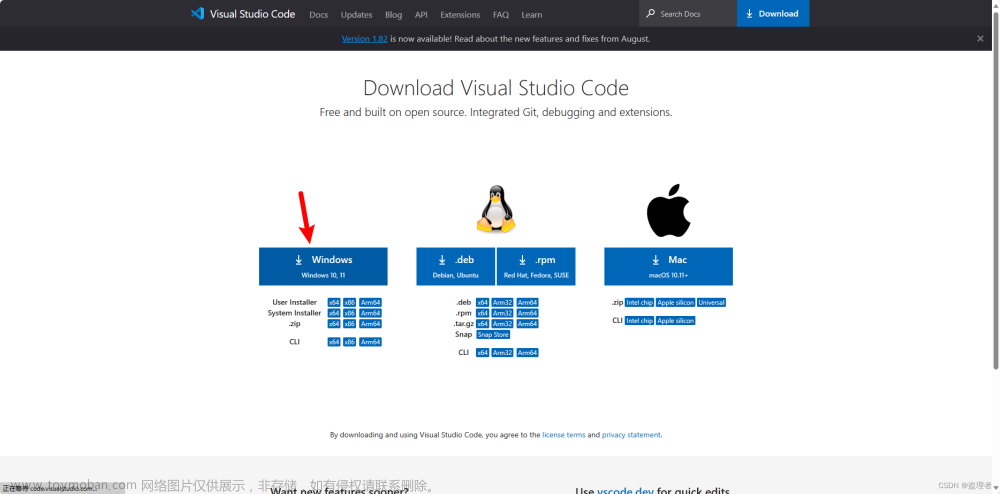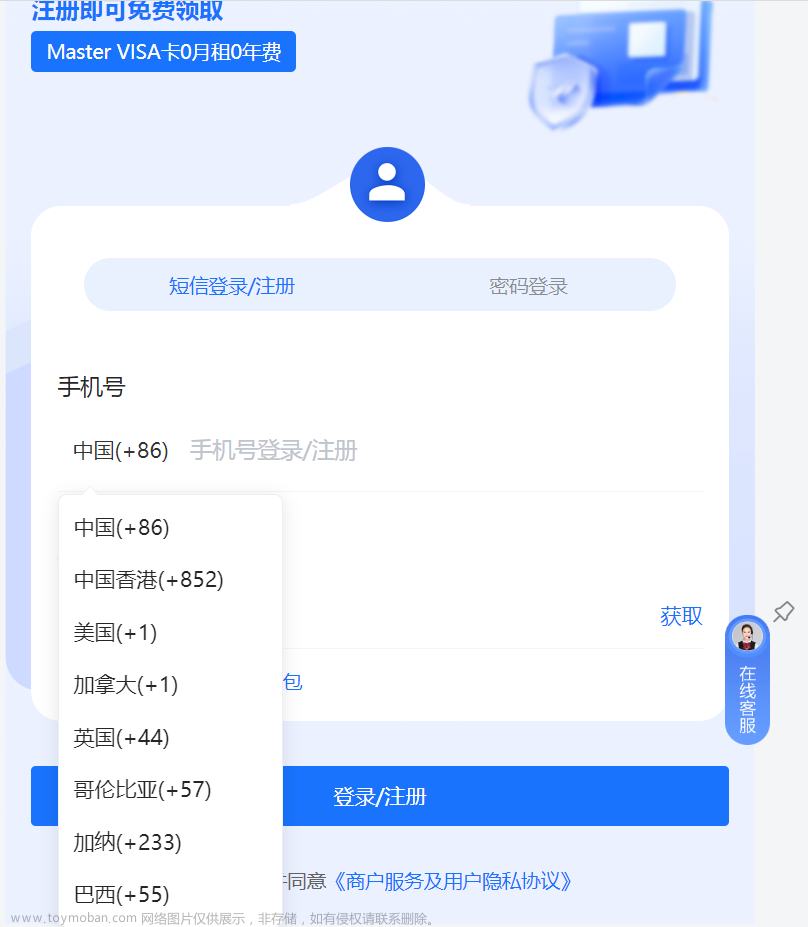《MetaGPT智能体开发入门》教程 - 飞书云文档 (feishu.cn)文章来源:https://www.toymoban.com/news/detail-818979.html
import asyncio
import os
import smtplib
import time
from email.mime.multipart import MIMEMultipart
from email.mime.text import MIMEText
from typing import Any, AsyncGenerator, Awaitable, Callable, Optional
import aiohttp
import discord
import pandas as pd
from aiocron import crontab
from bs4 import BeautifulSoup
from pydantic import BaseModel, Field
from pytz import BaseTzInfo
from metagpt.actions.action import Action
from metagpt.config import CONFIG
from metagpt.logs import logger
from metagpt.roles import Role
from metagpt.schema import Message
# 订阅模块,可以from metagpt.subscription import SubscriptionRunner导入,这里贴上代码供参考
class SubscriptionRunner(BaseModel):
"""A simple wrapper to manage subscription tasks for different roles using asyncio.
Example:
>>> import asyncio
>>> from metagpt.subscription import SubscriptionRunner
>>> from metagpt.roles import Searcher
>>> from metagpt.schema import Message
>>> async def trigger():
... while True:
... yield Message("the latest news about OpenAI")
... await asyncio.sleep(3600 * 24)
>>> async def callback(msg: Message):
... print(msg.content)
>>> async def main():
... pb = SubscriptionRunner()
... await pb.subscribe(Searcher(), trigger(), callback)
... await pb.run()
>>> asyncio.run(main())
"""
tasks: dict[Role, asyncio.Task] = Field(default_factory=dict)
class Config:
arbitrary_types_allowed = True
async def subscribe(
self,
role: Role,
trigger: AsyncGenerator[Message, None],
callback: Callable[
[
Message,
],
Awaitable[None],
],
):
"""Subscribes a role to a trigger and sets up a callback to be called with the role's response.
Args:
role: The role to subscribe.
trigger: An asynchronous generator that yields Messages to be processed by the role.
callback: An asynchronous function to be called with the response from the role.
"""
loop = asyncio.get_running_loop()
async def _start_role():
async for msg in trigger:
resp = await role.run(msg)
await callback(resp)
self.tasks[role] = loop.create_task(_start_role(), name=f"Subscription-{role}")
async def unsubscribe(self, role: Role):
"""Unsubscribes a role from its trigger and cancels the associated task.
Args:
role: The role to unsubscribe.
"""
task = self.tasks.pop(role)
task.cancel()
async def run(self, raise_exception: bool = True):
"""Runs all subscribed tasks and handles their completion or exception.
Args:
raise_exception: _description_. Defaults to True.
Raises:
task.exception: _description_
"""
while True:
for role, task in self.tasks.items():
if task.done():
if task.exception():
if raise_exception:
raise task.exception()
logger.opt(exception=task.exception()).error(f"Task {task.get_name()} run error")
else:
logger.warning(
f"Task {task.get_name()} has completed. "
"If this is unexpected behavior, please check the trigger function."
)
self.tasks.pop(role)
break
else:
await asyncio.sleep(1)
# Actions 的实现
TRENDING_ANALYSIS_PROMPT = """# Requirements
You are a GitHub Trending Analyst, aiming to provide users with insightful and personalized recommendations based on the latest
GitHub Trends. Based on the context, fill in the following missing information, generate engaging and informative titles,
ensuring users discover repositories aligned with their interests.
# The title about Today's GitHub Trending
## Today's Trends: Uncover the Hottest GitHub Projects Today! Explore the trending programming languages and discover key domains capturing developers' attention. From ** to **, witness the top projects like never before.
## The Trends Categories: Dive into Today's GitHub Trending Domains! Explore featured projects in domains such as ** and **. Get a quick overview of each project, including programming languages, stars, and more.
## Highlights of the List: Spotlight noteworthy projects on GitHub Trending, including new tools, innovative projects, and rapidly gaining popularity, focusing on delivering distinctive and attention-grabbing content for users.
---
# Format Example
```
# [Title]
## Today's Trends
Today, ** and ** continue to dominate as the most popular programming languages. Key areas of interest include **, ** and **.
The top popular projects are Project1 and Project2.
## The Trends Categories
1. Generative AI
- [Project1](https://github/xx/project1): [detail of the project, such as star total and today, language, ...]
- [Project2](https://github/xx/project2): ...
...
## Highlights of the List
1. [Project1](https://github/xx/project1): [provide specific reasons why this project is recommended].
...
```
---
# Github Trending
{trending}
"""
class CrawlOSSTrending(Action):
async def run(self, url: str = "https://github.com/trending"):
async with aiohttp.ClientSession() as client:
async with client.get(url, proxy=CONFIG.global_proxy) as response:
response.raise_for_status()
html = await response.text()
soup = BeautifulSoup(html, 'html.parser')
repositories = []
for article in soup.select('article.Box-row'):
repo_info = {}
repo_info['name'] = article.select_one('h2 a').text.strip().replace("\n", "").replace(" ", "")
repo_info['url'] = "https://github.com" + article.select_one('h2 a')['href'].strip()
# Description
description_element = article.select_one('p')
repo_info['description'] = description_element.text.strip() if description_element else None
# Language
language_element = article.select_one('span[itemprop="programmingLanguage"]')
repo_info['language'] = language_element.text.strip() if language_element else None
# Stars and Forks
stars_element = article.select('a.Link--muted')[0]
forks_element = article.select('a.Link--muted')[1]
repo_info['stars'] = stars_element.text.strip()
repo_info['forks'] = forks_element.text.strip()
# Today's Stars
today_stars_element = article.select_one('span.d-inline-block.float-sm-right')
repo_info['today_stars'] = today_stars_element.text.strip() if today_stars_element else None
repositories.append(repo_info)
return repositories
class AnalysisOSSTrending(Action):
async def run(
self,
trending: Any
):
return await self._aask(TRENDING_ANALYSIS_PROMPT.format(trending=trending))
# Role实现
class OssWatcher(Role):
def __init__(
self,
name="Codey",
profile="OssWatcher",
goal="Generate an insightful GitHub Trending analysis report.",
constraints="Only analyze based on the provided GitHub Trending data.",
):
super().__init__(name, profile, goal, constraints)
self._init_actions([CrawlOSSTrending, AnalysisOSSTrending])
self._set_react_mode(react_mode="by_order")
async def _act(self) -> Message:
logger.info(f"{self._setting}: ready to {self._rc.todo}")
# By choosing the Action by order under the hood
# todo will be first SimpleWriteCode() then SimpleRunCode()
todo = self._rc.todo
msg = self.get_memories(k=1)[0] # find the most k recent messages
result = await todo.run(msg.content)
msg = Message(content=str(result), role=self.profile, cause_by=type(todo))
self._rc.memory.add(msg)
return msg
# Trigger
class OssInfo(BaseModel):
url: str
timestamp: float = Field(default_factory=time.time)
class GithubTrendingCronTrigger():
def __init__(self, spec: str, tz: Optional[BaseTzInfo] = None, url: str = "https://github.com/trending") -> None:
self.crontab = crontab(spec, tz=tz)
self.url = url
def __aiter__(self):
return self
async def __anext__(self):
await self.crontab.next()
return Message(self.url, OssInfo(url=self.url))
# callback
async def discord_callback(msg: Message):
intents = discord.Intents.default()
intents.message_content = True
client = discord.Client(intents=intents, proxy=CONFIG.global_proxy)
token = os.environ["DISCORD_TOKEN"]
channel_id = int(os.environ["DISCORD_CHANNEL_ID"])
async with client:
await client.login(token)
channel = await client.fetch_channel(channel_id)
lines = []
for i in msg.content.splitlines():
if i.startswith(("# ", "## ", "### ")):
if lines:
await channel.send("\n".join(lines))
lines = []
lines.append(i)
if lines:
await channel.send("\n".join(lines))
class WxPusherClient:
def __init__(self, token: Optional[str] = None, base_url: str = "http://wxpusher.zjiecode.com"):
self.base_url = base_url
self.token = token or os.environ["WXPUSHER_TOKEN"]
async def send_message(
self,
content,
summary: Optional[str] = None,
content_type: int = 1,
topic_ids: Optional[list[int]] = None,
uids: Optional[list[int]] = None,
verify: bool = False,
url: Optional[str] = None,
):
payload = {
"appToken": self.token,
"content": content,
"summary": summary,
"contentType": content_type,
"topicIds": topic_ids or [],
"uids": uids or os.environ["WXPUSHER_UIDS"].split(","),
"verifyPay": verify,
"url": url,
}
url = f"{self.base_url}/api/send/message"
return await self._request("POST", url, json=payload)
async def _request(self, method, url, **kwargs):
async with aiohttp.ClientSession() as session:
async with session.request(method, url, **kwargs) as response:
response.raise_for_status()
return await response.json()
async def wxpusher_callback(msg: Message):
client = WxPusherClient()
await client.send_message(msg.content, content_type=3)
async def send_via_email(msg:Message):
# 设置邮件信息
sender = '123455@qq.com'
receiver = '123455@qq.com'
subject = 'Github Trending'
body = '<br>'.join(msg.content)
# 创建邮件对象
msg = MIMEMultipart()
msg['From'] = sender
msg['To'] = receiver
msg['Subject'] = subject
# 添加邮件正文
msg.attach(MIMEText(body, 'html'))
# 发送邮件
try:
server = smtplib.SMTP('smtp.qq.com', 587)
server.starttls()
#注意这个地方的密码不是邮箱密码,是授权码,不知道咋获取的搜索一下吧
server.login(sender, 'authenticCODE')
server.sendmail(sender, receiver, msg.as_string())
server.quit()
print('邮件发送成功')
except Exception as e:
print('邮件发送失败', e)
# 运行入口,cron 表达式遵循特定的格式,通常是:分钟、小时、日、月、星期几。测试使用,1分钟一次,用几下就关掉程序啊,不然。。。
async def main(spec: str = "1 * * * *", discord: bool = False, wxpusher: bool = False, email:bool = True):
callbacks = []
if discord:
callbacks.append(discord_callback)
if wxpusher:
callbacks.append(wxpusher_callback)
if email:
callbacks.append(send_via_email)
if not callbacks:
async def _print(msg: Message):
print(msg.content)
callbacks.append(_print)
async def callback(msg):
await asyncio.gather(*(call(msg) for call in callbacks))
runner = SubscriptionRunner()
await runner.subscribe(OssWatcher(), GithubTrendingCronTrigger(spec), callback)
await runner.run()
if __name__ == "__main__":
import fire
fire.Fire(main)照抄的教程啊,增加了个发送邮件的功能,发送邮件功能测试过了,可以发送成功,但是整个的没运行成功,应该是没科学上网,打不开trending页面的事,时间紧张,有空再搞通或者爬个国内的网页。文章来源地址https://www.toymoban.com/news/detail-818979.html
到了这里,关于MetaGPT入门(三)-OSS订阅智能体的文章就介绍完了。如果您还想了解更多内容,请在右上角搜索TOY模板网以前的文章或继续浏览下面的相关文章,希望大家以后多多支持TOY模板网!












